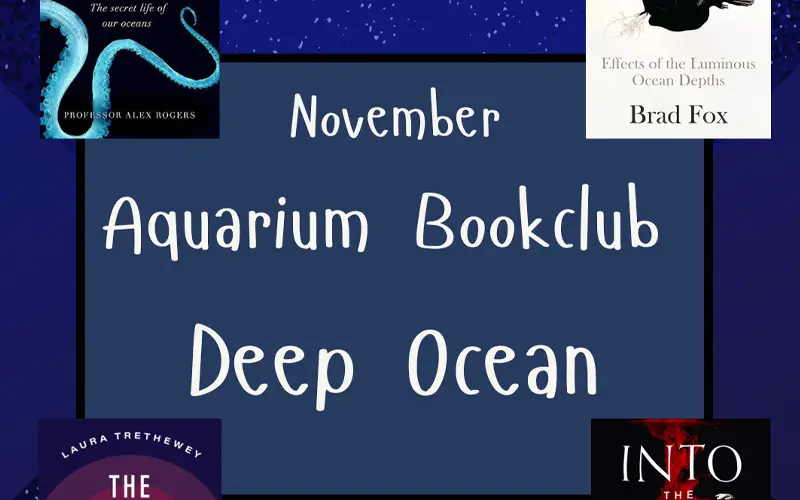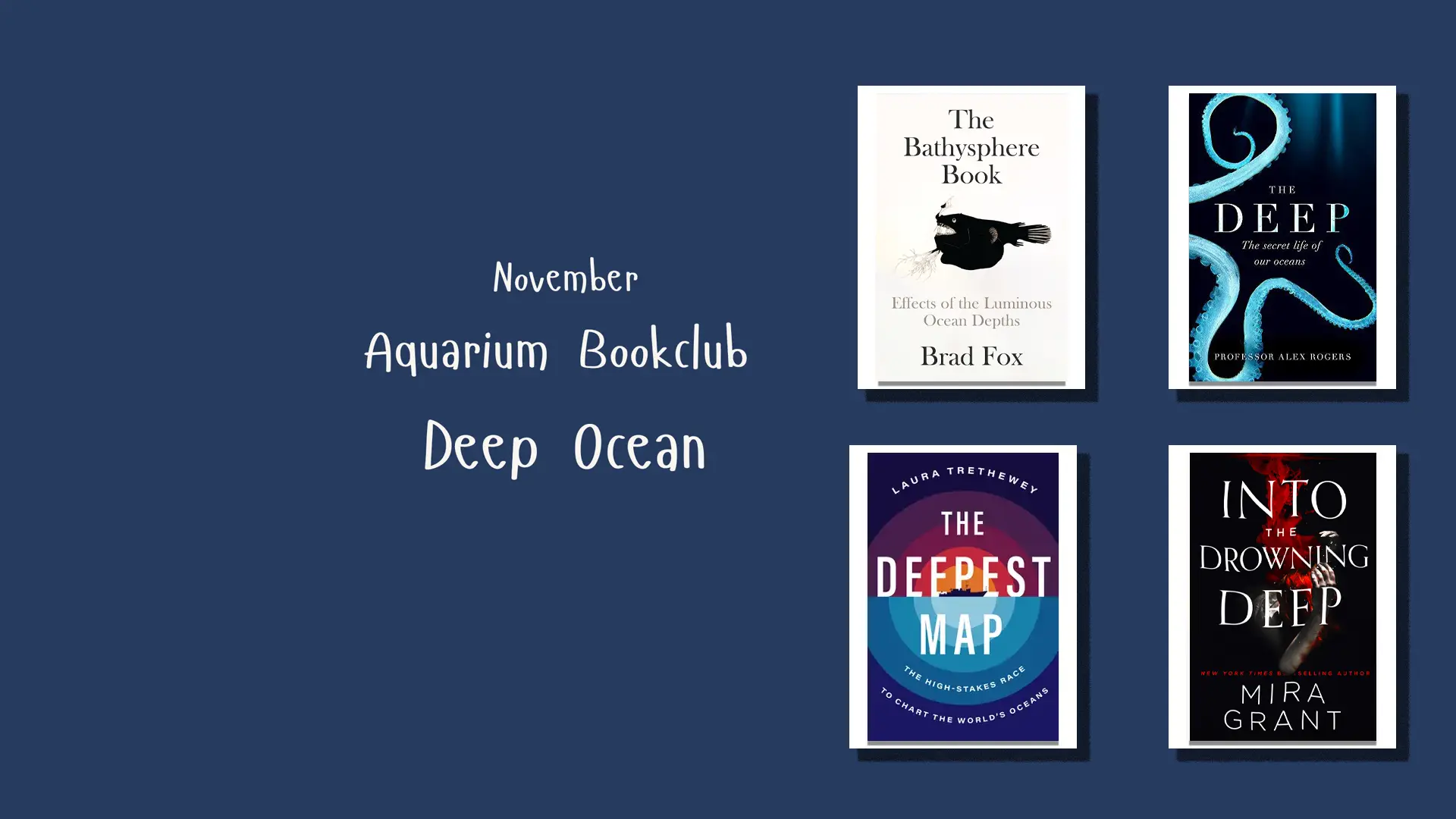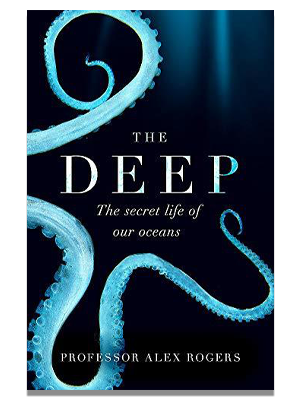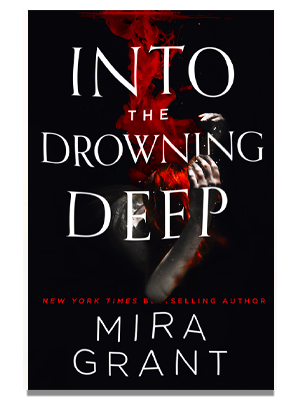Aquarium Book Club, October 2025 copy

November Good Reads…DEEP SEA

The Mariana Trench’s Challenger Deep is the ocean’s deepest point and is nearly 11 km deep! Despite its remote nature, it is full of life. This is the home of small crabs, snails, and worms but also larger animals like deep-sea sharks, giant squid and snailfish.
Much of the deep ocean remains unexplored, though with each new species we discover, we are learning more and more about these dark, inhospitable environments. Animals here have unique adaptations, such as bioluminescence, and because there is no natural sunlight here, they rely on vibration and smell to locate food.
The deep ocean has long captivated human imagination, and has been a great source for science fiction. Works like 20,000 Leagues Under the Sea by Jules Verne have been inspired by the deep sea, and the deep-sea creature Phronima – a deep-sea shrimp-like creature- partially inspired the monster in the Alien movie franchise. This month’s books are all featuring the deep ocean and the life it holds. ‘The Deep’ by Alex Rogers, ‘The Bathysphere Book’ by Brad Fox and ‘The Deepest Map’ by Laura Trethewey are non-fiction books, and for those who enjoy a science-fiction thriller, I have read ‘Into the Drowning Deep’ by Mira Grant
Professor Alex Rogers has dedicated decades to deep-ocean research, contributing to groundbreaking discoveries. His involvement in hydrothermal vent research dates back to their initial discovery in the 1970s, and he participated in both manned and unmanned submersible expeditions.
In his book The Deep, Rogers describes his research and brings the deep sea to life through detailed descriptions of its inhabitants and habitats.
Beyond his role as a researcher, Rogers is an active conservationist, contributing to projects, assisting in legislative efforts, and providing court testimony. His writings display a real passion for his work, research, and ocean life. He emphasizes the critical role of research and legislation in safeguarding this deep sea world.
I recommend this book for anyone interested in deep-sea research, its legal aspects, and the implications of the decisions we make about the ocean.

The Bathysphere Book by Brad Fox is very difficult to describe, blending elements of biography, science, poetry, and art.
The main character of the book is the Bathysphere, the spherical metal submersible designed by William Beebe in the 1930s. The book describes the early days of deep-sea exploration and introduces the people who played an important role. All throughout the books are lifelike illustrations by contemporary artists who did their best to depict the newly discovered deep-sea creatures.
While it’s not a conventional science book, nor a true memoir, it brings the early days of deep-sea exploration alive. The fantastic illustrations alone make it a worthwhile read, and the text offers enough to engage people interested in the history of deep sea science.

Laura Trethewey’s The Deepest Map explores the difficulties of ocean mapping, highlighting the surprising reality that despite technological advancements our understanding of the ocean floor is still limited.
Trethewey details the immense challenges that complicate this task, from the extreme conditions of the deep sea to the vastness of unexplored abyssal plains. She describes the various reasons for mapping, ranging from resource extraction to scientific curiosity, and profiles the people dedicated to this exploration, including the oceanographic cartographer Marie Tharp, Victor Vescovo and his mission to dive the deepest parts of all five oceans, and Cassie Bongiovanni who is the mapper onboard his vessel.
The book details deep-sea ecosystems’ role in climate, biodiversity, and resources, and the pressures they face from mining, fishing, climate change, and pollution. It explores ethical dilemmas and scientific challenges and it highlights the link between decisions made today about the ocean floor and the implications for our shared future.
This insightful book makes a complex scientific subject understandable for a general audience and I highly encourage everyone with an interest in ocean conservation to pick up this book.

In Mira Grant’s Into the Drowning Deep, an expedition to the Mariana Trench investigates a previous film crew’s disappearance, which seems to have been caused by predatory mermaids. As much as this book is not a factual description of deep-sea life, it does play with the knowledge we have of deep-sea adaptations and what mermaids could be like if they were real. Grant imagines mermaids as intelligent and ruthless hunters.
This book is an interesting blend between a scientific horror and marine thriller and is a great novel for people interested in a fast-paced adventure story. However, be warned, it is not for the faint of heart as there are some gory descriptions of the carnage the mermaids leave behind after they go on a human hunting rampage!

Next month I will be reading books on sharks!
I invite you to read along with me to learn to understand these animals better and hopefully change the public view that instead of mindless killers, we can see them for the beautiful and versatile group of fish that they are.
Emperors of the Deep by William McKeever
The Secret History of Sharks by John Long
Demon Fish by Juliet Eilperin
Julia and the Shark by Kiran Millwood Hargrave
.
